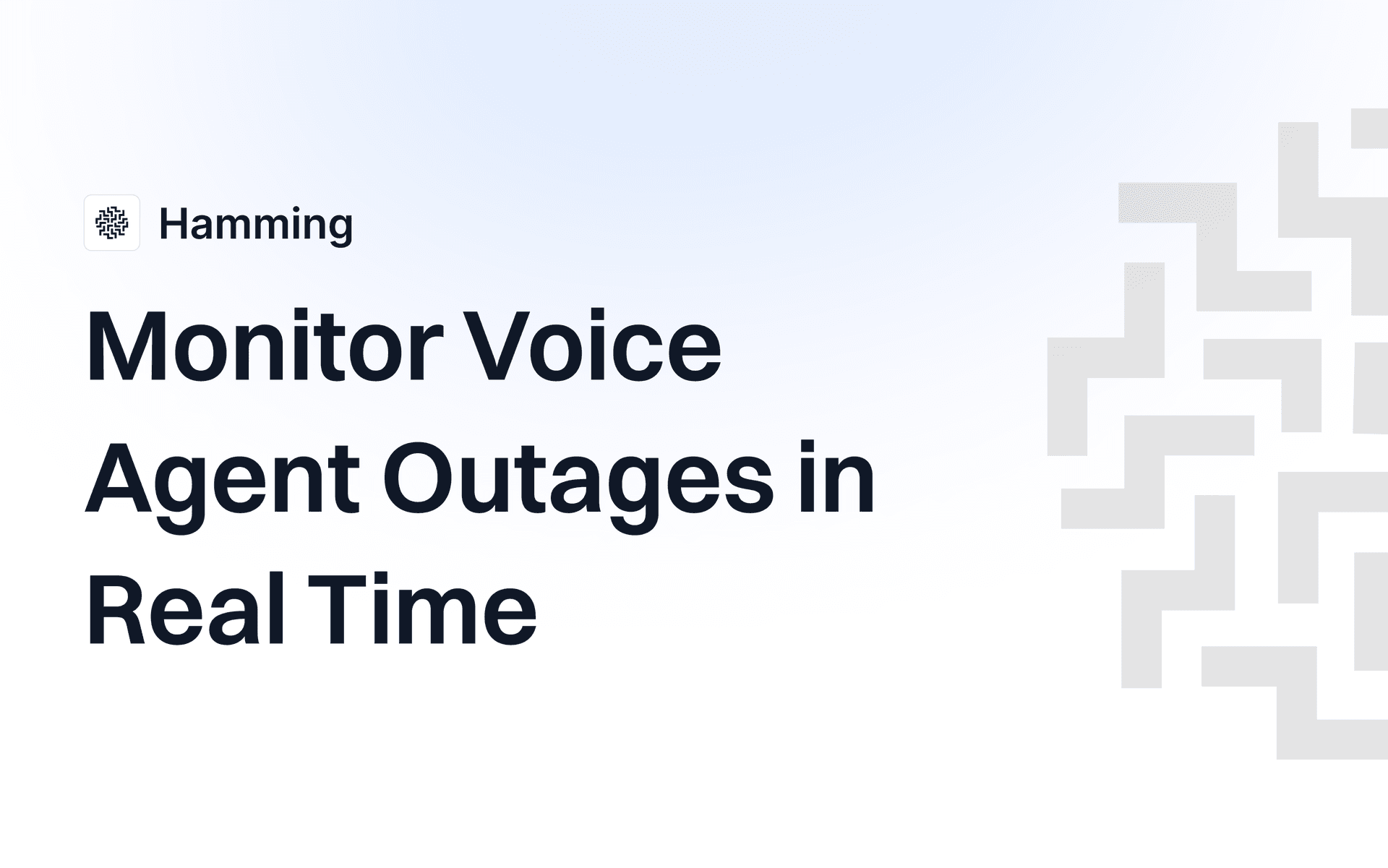The complexity of AI voice agents makes them prone to subtle failures that can quietly disrupt reliability and the overall voice user experience. Detecting voice agent outages is difficult without the right observability platform; most teams still rely on manual QA and post-call reviews to detect issues long after users have felt the impact.
Maintaining the reliability of voice agents requires real-time insight into how each layer of the system performs in production. Without that visibility, voice agent outages often go undetected until users start complaining.
In this article, we’ll walk you through how to monitor AI voice agent outages in real time.
Why Voice Agent Outages Are Hard to Detect
Voice agent outages are often silent. For instance, the voice agent might not crash or stop responding, but rather behave differently. This could be represented as a slight delay in transcription, a missed intent, or an LLM hallucination.
This makes real-time detection difficult: what looks like a normal interaction in logs is frustrating the user on the other end. Part of the challenge in detecting voice agent outages is the architecture of the voice stack.
Most voice agents depend on multiple probabilistic components, ASR, NLU, TTS, LLM etc. If any layer experiences latency, drift, or dependency failure, it can ripple across the entire conversation without causing a visible outage.
Another reason why voice agent outages are hard to detect is that most teams still rely on manual post-call quality assurance to discover them. By the time an analyst reviews transcripts or listens to recordings, the underlying issue, an API slowdown, a model regression, or an expired integration key has often already been resolved. What’s left behind is only a pattern of “fallback” responses, longer pauses, or increased drop-off rates that don’t depict what went wrong.
How to Monitor Voice Agent Outages in Real Time
Here’s how to monitor voice agents in real time:
Define What Counts as an Outage
Before you can monitor for outages, you have to define what an outage looks like for your agent. It's wise to think in functional thresholds and not binary thresholds.
Here are some metrics:
- Conversational downtime: when the agent fails to respond within 1.2 seconds or drops a call.
- Intent accuracy degradation: when NLU precision drops below your acceptable baseline (e.g., 92% → 80%).
- API dependency failures: when any linked API (ASR, LLM, CRM) exceeds latency or error thresholds.
Determine Monitoring Signals
To determine the right monitoring signals, teams need to define what evidence of failure looks like, the specific patterns, delays, and anomalies that indicate when a voice agent is starting to break down.
For the ASR (speech recognition) layer, this can mean tracking metrics like Word Error Rate (WER). A sudden increase in WER from 6% to 15% signals voice agent outage.
In the NLU (intent classification) layer, shifts in intent accuracy or an increase in fallback responses (“default” or “unknown” intents) can indicate a voice agent outage.
In the TTS (speech synthesis) layer, when P90 latency exceeds 2 seconds, it often signals a voice agent outage.
Run Synthetic Calls 24/7
The most reliable way to detect outages before your customers do is to simulate customer calls continuously. Synthetic calls test and evaluate voice agents in production.
By running synthetic calls around the clock, teams can measure latency, accuracy, and success rates under production conditions, even during low-traffic hours when performance regressions often go unnoticed.
Automate Alerting
Near real-time alerts help you resolve issues before they snowball into customer-visible failures.
Hamming automatically routes alerts to your engineering, QA, or operations channels the moment latency, accuracy, or compliance thresholds are breached. Alerts can integrate with Slack, PagerDuty, or your incident-management stack to trigger immediate triage and resolution.
Monitor Voice Agent Outages in Real Time with Hamming
With Hamming, teams gain continuous visibility into every layer of the voice stack, from ASR drift to API slowdowns. Real-time alerts, synthetic call testing, and detailed reliability dashboards give you the earliest possible signal when your voice agent starts to degrade.
Instead of discovering failures hours later in transcripts, you'll know the moment they happen and resolve them before users ever notice.
